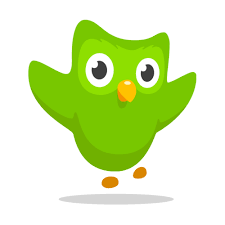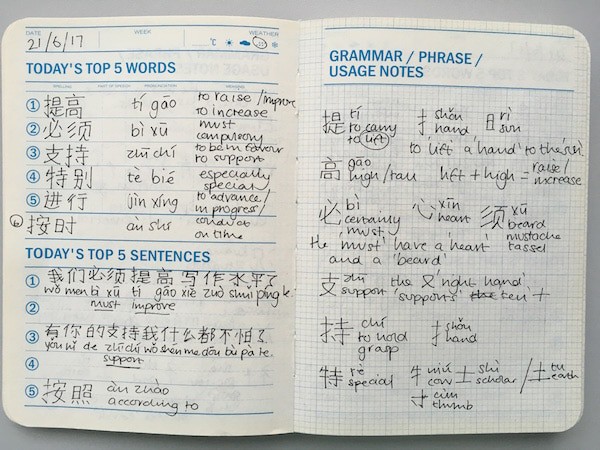Wassup
So I’m sitting here looking at my class’ assigned topics with the words “How-To-Manual” and thinking…”what in the world am I going to do?”
And then bada bing bada boom the Duolingo owl came for me. Figuratively, of course. They haven’t been able to perfect that piece of technology…yet
So here I am writing a manual on how to learn a language. Obviously there are multiple reasons to learn a language and different things you need to learn first depending on the reason. If you’re a tourist, you most likely want to start with common things like “Where’s the bathroom?” or “I need help!”
For this manual, though, I will be talking about ways to learn a language as though you want to learn the language for life. Let’s get it!
#1: Look into Language Learning Apps
But Logophile! Why do I need to get an app first? Well readers, that’s because no matter how dedicated you are you will not be able to learn a language just through self-study. And face-to-face lessons are expensive and most likely only happen once a week. With an app, you can learn whenever/wherever you want, get daily reminders, and (most of the time) not pay for them! Its a win-win-win.
Here are some language apps that I know of:
Duolingo
 For those of you that didn’t get my reference from the introduction
For those of you that didn’t get my reference from the introduction
<– this is the Duolingo owl. He threatens you if you miss your daily lesson.
Anyway. Duolingo is The number one language app. Its free, has over 30 languages, has organized lessons that you have to learn to move on, and ways to listen and speak the word you’re learning. It’s designed to make you actually retain what you learn, and to make you learn the language faster. You can pay for extra services, such as no ads, or learn for free. I’m using Duolingo myself to learn a language and its awesome.
Drops
 Drops is personally my favorite app to use. Unlike Duolingo, no crazy bird is going to come after you if you miss a lesson.
Drops is personally my favorite app to use. Unlike Duolingo, no crazy bird is going to come after you if you miss a lesson.
What makes Drops unique is that it uses drawings and animations to convey the word you’re learning instead of just the word in your daily language. This way, you don’t keep connecting the new language to your old language. Drops uses several different interactive techniques that help you learn faster. For example, if you’re learning a language that uses a different alphabet, you actually draw the new characters on your screen.
The only downside to Drops is that you’re only allowed 5 minute lessons every 12 hours. Of course, you can pay for unlimited, but I’m cheap so I don’t 🙂
There are way more than these two but these are my personal favorites and the ones that I recommend. Depending on your target language there are apps that specialize in just one language, so check those out if you can.
#2: Look Into Physical Books
If you’re like me, then you like to have something that you can physically feel. Its why I can’t do EBooks or audio books even though I love the idea. So even if you aren’t able to carry it around everywhere, a physical foreign language book that you can make notes or draw in is a great way to learn. And its great for cross-checking your sources. I myself don’t have one (again, because I’m cheap), but most book stores have a whole section of language learning books.
#3: Create a Journal
Now, you might be thinking, “I am NOT 10 years old I don’t need to write in a journal!” or “I tried to write a journal YEARS ago and i just couldn’t do it”.
Well hun let me teach you a little something. Do you know what the hardest thing about learning a foreign language? Its not all of the translating and memorizing, if that’s what you’re thinking.
Its dumbing yourself down.
Think about it. Technically speaking, when you are learning a new language, you are starting off on square one, level zero. In that language, you ARE 10, or even younger than that. But most people want to just take off. They’re thinking that they need to learn how to say this and that…but that’s not how you started learning your native language when you were 3. THAT”S how you start learning a language. So the best thing to do is start writing in a book. You can organize it anyway you want. “Dear Diary, today I learned that ‘car’ is ___” “‘Car’ is ___. ‘Apple’ is ___.” Or you can write IN that language. Use the words that you know and try to convey your thoughts.


Just write.
#4: Watch/Listen to Media in That Language
Let me tell ya something. I have learned (and actually remembered) more words and phrases in my target language listening to their music and watching their TV shows than actually studying.
If you need to learn a language quickly (like you’re taking a trip to that country) then doing this is the absolutely best way. Now why is that? well number one it shows you what the social culture of that country is. Number two because it shows you how people actually talk in that language on a day to day basis. If you’ve ever met someone who has learned a new language but hasn’t spent a long time around people who natively speak it, then you know that they usually sound very stiff, very formal. “Hello. How are you? I am good. Thank you”
Like a robot.
But we don’t want to be a robot now do we? So we watch their media and listen to their music.
Netflix

Netflix has been known to have many shows that are in different languages. They aren’t the cream of the crop in my opinion, but they would be useful in learning that language.
I know that they have shows in:
Mandarin Spanish
Korean Portuguese
Japanese
Viki Rakuten

Okay so if the language you’re learning is Asian then Viki is the best thing for you. The only reason I know is because the language I’m learning is Korean. Its a free app that literally has hundreds of TV shows and movies per language. It has Chinese, Korean, Japanese, and (even if its not a language) Taiwanese shows. To keep it free it does have ads (usually 30 seconds) but you can pay for premium which takes care of that.
As for music, well, just check Youtube.
Okay so this is the end of all that. I don’t know if this was really helpful but its the best that I can offer 🙂
The best advice that I can offer is to STUDY STUDY STUDY
Logging out,
The Logophile





